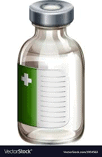
My friend Bob forwarded an opinion piece from today’s New York Times entitled: How long Will a Vaccine Really Take?
As the author of Fast Cycle Time, I’m rarely against faster development (as long as it delivers value). Bob’s note triggered me to take a deeper look at the underlying barriers and opportunities for speed for a Covid-19 vaccine.
Speed = Value Delivery
The drug approval process is all about balancing risk and benefit. For regulators, risk containment drives decisions more than the benefits gained. All drugs have side effects. Dial-in the public’s reaction be it anti-vaxxer or potential recalls, it’s safer for regulators to say “no” when any hint of a problem surfaces. A bias towards no is a bias towards slow
But just skipping steps rarely increases speed safely. For example, to speed Covid-19 antibody testing to market, the FDA uniquely allowed test manufacturers’ to go to market without first being authorized. According to the FDA website, only one test in more than seventy released has been authorized.
Not surprisingly, there have been many issues with antibody test results including false positives and false negatives. Being falsely told that you have antibodies could cause someone to venture in public thinking they immunity when they didn’t.
Speed without value can be more dangerous than helpful.
The Complexities of Life Science
Vaccine development is not like designing a car or new software. In both these cases, the gap between what’s already known and what’s needed to complete the project is normally quite small – think of designing a keyless door entry or adding a new button to a web site.
In drug and vaccine development, the gap between what’s known and what’s needed to succeed is far larger. The advances in cancer drugs, AID/HIV, etc. evolve slowly as the knowledge gap is whittled down.
Speeding up drug development without increasing the potential for missed complications is also governed by humans response time to drug therapy. You can track but you can’t speed up patients’ reactions to a drug the way a supercomputer can speed up testing a software program.
The optimistic findings in the recent Remdesiver trial that forecast a reduction in Covid-19 hospital stays from 15 to 11 days required minimally 15 days to reach that conclusion. As these are averages, some patients were tracked longer than 15 days. When you multiply that over multiple study sites with staggered start and end times, you can see why trials can take so long.
FDA Approval is a Starting Point
It’s important to note that the drug approval process only gives initial confidence in the safety and efficacy of new drugs. Once released, the population using the drug expands exponentially. That will be particularly true for the Corona virus as the user base is potential all human life on Earth. Therefore, any harmful issues found after release would impact a much larger population. In that case, the cure could become worse than the disease.
Using a fast track approach responsibly would heighten requirements for post-release studies. Post-release studies are hard to get funded because there’s minimal economic upside for the manufacturer in comparison to getting the next new drug approved. With a disease of this scale, any fast-paced approach should also include funding for large-scale post-release studies.
Parallel execution
Parallel processing is a standard fast cycle time strategy. It works best when the prior phase has a higher probability of success since a failure in the prior phase turns most concurrent work in later phases to scrap. Parallel processing works best with incremental innovation such as repurposing an existing drug than creating a new molecule.
For those reasons, overlapping the second and third phases of drug development is better than phase one as one can leverage what was learned in phase one.
Recruitment Challenges
Recruiting people for a study’s drug and control arm is a major time sink. Getting people to sign up, fill out consent forms, etc. is a challenge as is keeping track of them throughout the study. Phase 3 is typically the largest challenge because it involves the most study sites and people.
The good news is there are plenty of people at multiple stages of infection with the Corona virus. This creates a large and easy to identify pool of potential trial participants that is also highly motivated: quite unusual.
Scaling Manufacturing
Vaccine production is difficult due to the nearly infinite combinations of biological variability in starting materials, the microorganism itself, the condition of the microbial culture etc. Testing comparative batches of product also has high variability.
Scaling is dependent on growth rate (e.g. it’s hard to speed up yeast action when baking bread) and equipment size which in itself can thwart progress. What works at lab scale often has surprises when done at huge production vessels.
Building a manufacturing plant in parallel as noted in the Times piece would save time. The key question is how many “risk-buy” decisions one’s willing to make. Risk-buy decisions make bets on process requirements, vessel sizing, plant layout, control equipment, etc. before one knows for sure. While it’s faster, the likelihood of scrapping and replacing predicted needs increases.
Knowing this upfront is helpful. Rather than designing a plant for cost minimization; design the plant with an eye towards anticipated adaptability. Minimize decisions that create “hard points” (costly to modify) and maximize flexible elements that may be removed or re-scaled.
Faster Value Depends on Faster Learning/Experimentation
The data collection required to track thousands of trial participants and all the details of when they took the drug, their reactions, complications, etc. is not trivial. Though workflow software makes this faster, much ends up being done on paper, faxes, etc. Having a strong and common IT infrastructure across multiple study efforts is as exciting as plumbing but, its impact is enormous.
Researchers will learn as much from other trial failures and successes as their own. The easier it is to move data within and between studies, the faster a vaccine will be found.
The Biggest Barrier to Speed is Already Solved
With estimates for the cost of developing a new drug exceeding $1b, companies are cautious about choosing and launching new programs. The fact that the Corona virus created a global pandemic provides an impetus that rarely exists in a single firm.
Instead of going through an endless series of management review and small scale proof-of-concept experiments to start development, the Corona virus begins with a loud “all hands on deck”.
Let’s get after it.

 I'm Christopher Meyer - author of Fast Cycle Time, Relentless Growth and several Harvard Business Review articles.
I'm Christopher Meyer - author of Fast Cycle Time, Relentless Growth and several Harvard Business Review articles. 